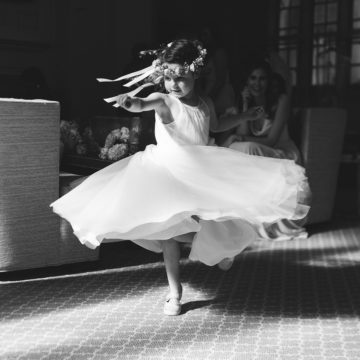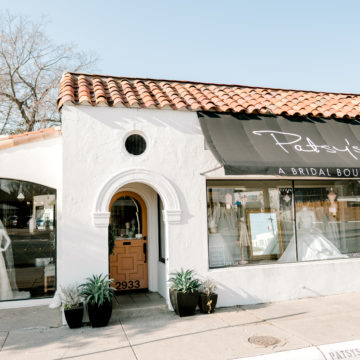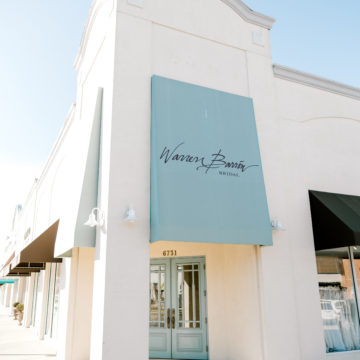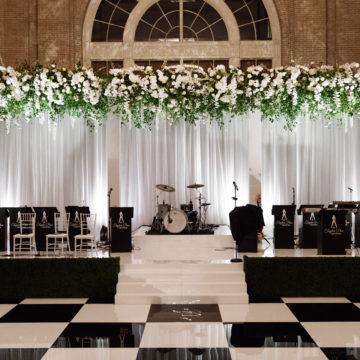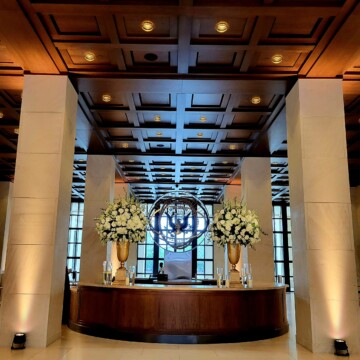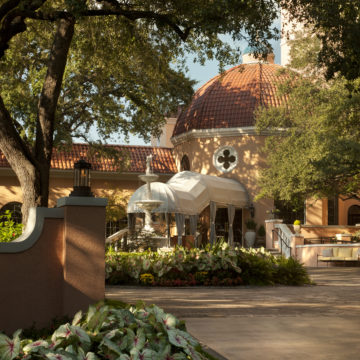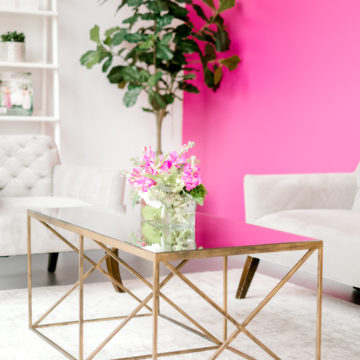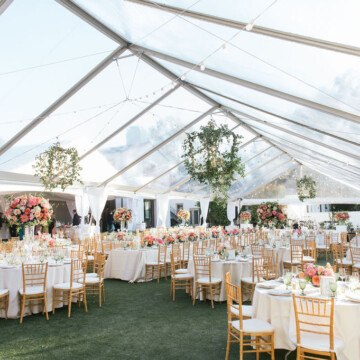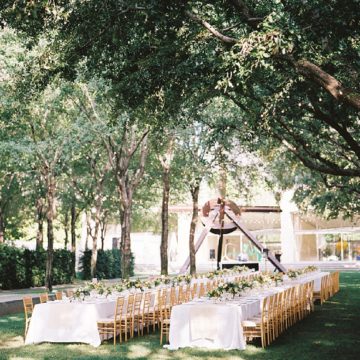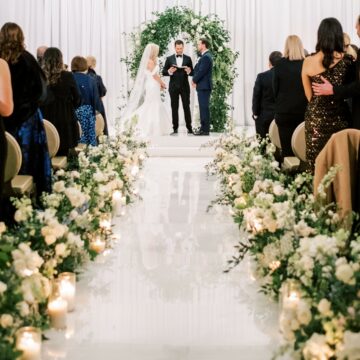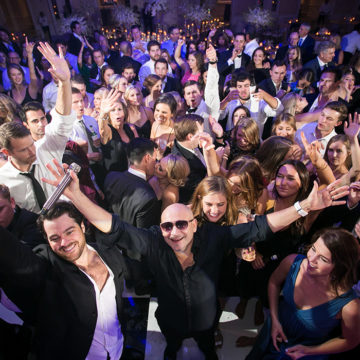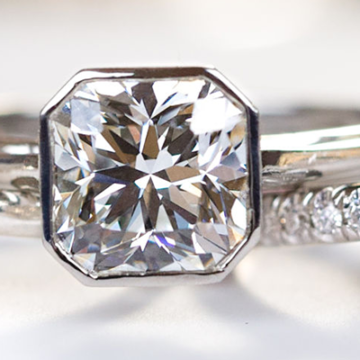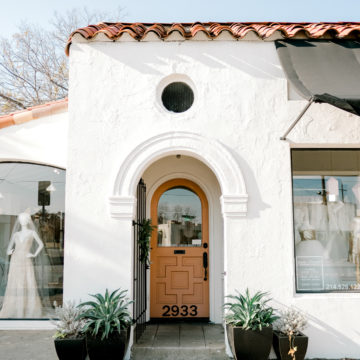Tips for Planning a Wedding That Blends—and Celebrates—Two Cultures, from a Past D Weddings Bride
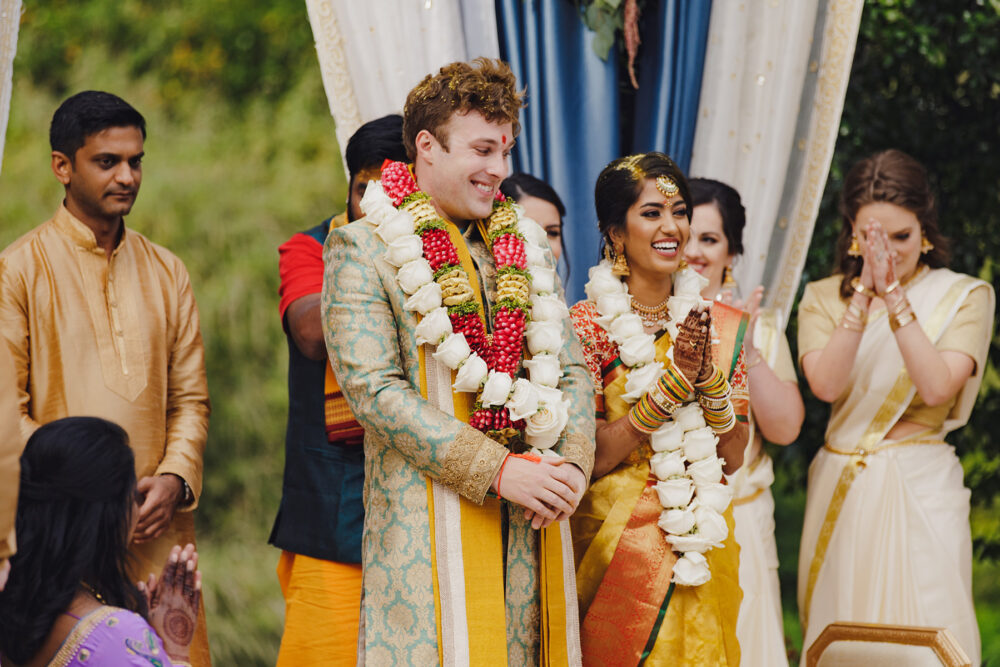
We love a wedding that’s personalized to the couple saying “I do,” and when the bride and groom hail from different cultures or faiths, that means planning a celebration that integrates and celebrates both individuals’ respective backgrounds. One of our favorite featured weddings that accomplished this beautifully was that of Saumya Tayi and Kyle Blackburn, featured in the Fall/Winter 2019 issue of D Weddings. We asked Saumya for her advice on how to make sure your special day is a reflection of both of your worlds and customs.
Saumya Tayi and Kyle Blackburn
Before we get into her tips, let’s recap: Saumya Tayi’s parents immigrated to Plano from India in the 1970s, while Kyle Blackburn grew up in a rural Kentucky town. A medical residency brought Kyle to Dallas, and the two originally connected on a dating app but quickly learned they lived in the same apartment complex, making their relationship feel comfortable early on. The two said “I do” on November 3, 2018, in a celebration that brought two families and worlds together. The day started at 2:30 p.m. with a traditional Hindu ceremony, which was followed by a Western exchange of vows at 6:00 p.m.
No one knows you like you do
When planning your day, be intentional about working with your fiancé and family to come up with ways to blend the cultures. Saumya and Kyle’s day was filled with personal touches that paid tribute to not only their backgrounds but also experiences they had as a couple. And while they called on Elegant Affairs to help them plan, many of the touches were “joint ideas between me, Kyle, and our parents,” Saumya says.
For example, a traditional Hindu ceremony begins with a baraat—a procession where the groom parades into the ceremony dancing to Indian music. Saumya and Kyle substituted the Indian musicians for the Brian Murray Jazz Band as a nod to Kyle’s Southern upbringing. The procession also functioned as a second line, which is customary at weddings in New Orleans—a city the pair visited together and holds close to their hearts.
The couple also put their own twist on food and garments. They chose lamb as one of their main courses because mutton and lamb are popular in both South Indian food and Kentucky barbecue. In terms of Saumya’s reception lehenga (traditional Indian outfit), the cut was classic, but the embroidery reminded her more of a huipil—a Hispanic embroidered dress, which she felt was a proper nod to her Texas roots.
At the same time, planners are important
Having said that, hiring a planner with experience in planning an interfaith wedding can make all the difference. “Surround yourself with vendors who are authentic when it comes to cultural aspects,” Saumya says. “The last thing you want to do when you are planning a multicultural event is water down the traditions or heritage and make shortcuts; having vendors that are experts in what they do helped us avoid this.”
Always be alert
“Keep an eye out for fun ways to blend the cultures as you are planning,” Saumya says. “It can be really hard to brainstorm ways to blend two cultures, but if you look around I think every bride will realize that no matter what background, ethnicity, or religion you are, weddings are always celebratory events and there are so many parallels between weddings from all different cultures just waiting to be discovered.”
Logistics are important
If your interfaith wedding is going to have multiple events or ceremonies, be mindful of your vendors and guests. Doing this will help your day run smoothly and make it more fun for all parties.
“Logistically, we knew it was going to be a long affair for our guests and tried to be mindful of that throughout the planning process. This was part of why we picked Arlington Hall: We wanted to give our guests a nice flow throughout the day with different spaces and room to walk around the grounds so that the day would fly by,” Saumya says. “We also wanted to make things logistically easy for us and have two separate ceremony sites (the gazebo and formal garden), a common meeting place in the middle (the Arlington Hall lobby and ballroom), and a separate reception hall (a tent off of the main building). This way, our vendors wouldn’t have to scramble to take down and move large items to create new spaces.”
So, how do invitations work with a multi-event affair?
Not only did Saumya and Kyle have two ceremonies on the day of their wedding, they also had five events in the two days prior to the wedding day, so they sent invitation cards by day—one for Thursday’s events, one for Friday’s events, and one for the day of the ceremonies—keeping it organized. “It’s very common for Hindu weddings to be multi-day, multi-event affairs, and I am so glad we got to squeeze it all in,” Saumya says.
When in doubt, let your guests eat
Between the Hindu ceremony and the Western exchange of vows, Kyle and Saumya treated their guests to a multicultural tea. “There are very specific foods Indians eat with chai (traditional Indian tea), just like Western tea,” Saumya says. “Where in the West we have tea sandwiches and pastries, Indians enjoy spicy nut mixtures, samosas, and traditional Indian sweets. We decided to make our mid-afternoon tea a cross between an Indian and a Western tea.”
And between the exchange of vows and reception, they hosted a cocktail hour in the lobby of Arlington Hall with more food. “It wouldn’t be an Indian wedding if there wasn’t a lot of food,” Saumya says.
